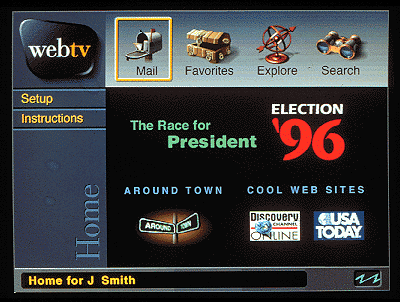We are now in an era of technological stagnation, a true plateau. The last time this happened???between 1990 and 2000???we lived in a world that changed little over a decade with incremental and short-sighted technological improvements standing in for real change. The current stagnation began in about 2008 and I expect it will end in five years.
I realize this is a lot to swallow but consider the facts: between 1990s and 2000 little changed. The Web, which was in its infancy, was still considered a plaything or snake oil by an important subset of the technologically savvy and Bill Gates didn?t get publicly bullish on the Internet until 1997. The browser was an enemy and most businesses fell back to Lotus Notes and private networks in an effort to keep their employees from potentially using company time to connect their business to the world. Linux was a plaything and open source was a haven for zealots and the socially awkward.
Hardware was stagnant. Speeds and feeds went up but the form factor and software was the same. Gaming consoles pushed the envelope with new formats and processors but generally a computer lasted about five years. There were no improvements to mobile and the cellphone was seen a toy for the rich.
Things changed during that lost decade but not by much. Imagine the 1990s as a precursor to the massive change that came when retail, networking, industry, and logistics all connected to a central nervous system called the Internet and gave us the ability to order a viewing of A Little Princess between starting a batch of popcorn and ensuring the kids aren?t hitting each other on the couch. We should note that streaming took off in 2007, a year before the current stagnation hit.
In short, technological stagnation comes when a culture is so saturated with the status quo that it cannot imagine the future. We are there. We have experienced a sea change in the way we consume media, the way we travel, and the way we shop. We have access to world-wide mapping systems undreamt of in the early 1990s and communication systems that are like Yahoo! Chat on steroids (but they still mimic Yahoo! Chat down to the smileys we can send). We have devices that can power our lives and reside in our pockets yet they are still woefully inadequate. A background hum of technology has saturated our lives without changing them materially as compared to the early 2000s. We still work the same way, still pay with credit cards (albeit virtual ones), and even sex tech, that harbinger of future change, is stuck in the past with only incremental improvements thanks to networking and the Internet of things.
Consider recent growth in various industries. In media we hopped from HD disk format wars to streaming to 3D to VR. Aside from a few core differences these are all versions of the same visual consumption paradigm. VR our best approximation of what the future of video will look like just as LaserDisc was once our best approximation of what the future of video will look like. VR and AR will not be popular until they are completely immersive and by that time we will be far removed from wonky video screens and cellphones inside of plastic boxes that the current technology will seem silly. ?The holographic paradigm is the closest thing you?ve worked out to a representation of human memory, is all,? Wintermute told Case in Neuromancer. Our mission, if we choose to accept it, is to supplant that representation with a more direct stimulus.

In health sciences we are at an impasse. Technologies like CRISPR are amazing but in its current implementation the system is too new to enact any real change in the next few years. Again, there will be a moment in time when we can point to a before and after in true gene therapy with knock-outs and alterations becoming commonplace. Until then we must accept meek hand-wringing and slow research. ?CRISPR could one day hold the cure to any number of genetic diseases, but of course human genetic manipulation is ethically fraught and still far from becoming routine,? wrote Wired science reporter Sarah Zhang. This is akin to saying in 1992 that one day there would be a car that ran entirely on electricity: the technological path was clear but the barriers still looming.
In terms of financial systems the word ?blockchain? has become synonymous with ?forward-thinking? in financial institutions. This exactly the same as the aforementioned private networks created by frightened CEOs who didn?t want the world to leak into their walled gardens. Like children playing grocery store they go through the motions of modern commerce but cannot or will not put the tools afforded them into practice. As a result we exist in a nebulous space between the future of money and and its long, rapacious, and inefficient past.
Directly related to the Internet of Value we have the Internet of Things. At this point the devices in our house are like green screen terminals connected to a central server. Some devices talk to each other???I can turn my heat up with my arguably amazing Harmony Elite remote control but there is no central intelligence that will tell me how to reduce my gas bill by asking me to put on a sweater. My Fitbit talks to Fitbit?s servers and my Sonos talks to Sonos? servers and there is no way for my Sonos to start playing Eye Of The Tiger when I start a run. There is also no way for these devices to ask permission of each other, a feature that will come about when we truly embrace micropayments and smart contracts.
Finally in terms of mobile technology the only way forward for handset makers is to make their handsets disappear. Connected interfaces like e-paper will improve things over time but in the tapping at a black slab of glass while we sit at a bar will be seen as rude and untoward as farting in public while the current crop of ?VR-like? experiences will be woefully primitive. Fear not: if you want technology to block out the world for you it will, but until we see real change in form factors you will have to resort to being anti-social while looking down at a screen, not up at a variegated virtual world of shifting social media notices.
The astute will note that every dark hour foretells the dawn. This is absolutely true. But in this current dark hour don?t expect much to happen. VCs will continue their short-sighted investments into laundry delivery services, startups will attempt to solve small problems with big data, and industry will hum along happily as frustrated futurists take jobs in cubicles rather than take on big problems. It will take a massive change, whether physical, mental, or programmatic, to pull us out of these doldrums. I suspect it will begin when we start connecting our nervous systems more directly to the hardware we use. Bold ideas must be wrested out of the arms of those who would hold them back. In other words we must give up small thinking and, as humans, we all know that?s very, very hard.
But it is not, I must believe, impossible.



